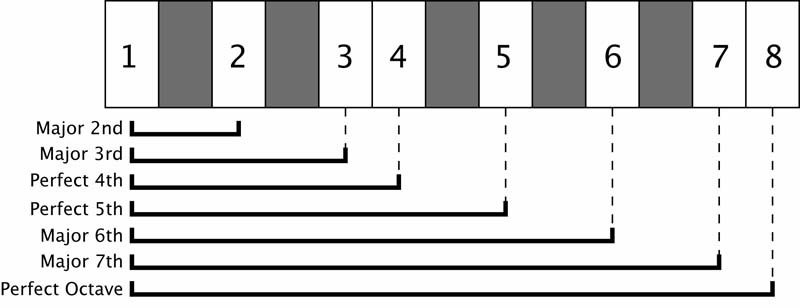In this lesson we will learn about Minor 3rds.
Before we do, however, we need to talk a little bit more and how scales and intervals are related.
As we have already learned the degree of the interval is based on how many steps one must take in the scale to get there.

The first note always counts as 1.

Intervals also have a quality.

For example the quality of a Major 2nd is Major.

Octaves, 4ths, and 5ths are normally called “Perfect” because of their very pure sound.
| Perfect 4th – Chord | |
| Perfect 5th – Chord | |
| Octave – Chord |
All other intervals are called “Major” if the line up with the major scale.

This includes 2nds, 3rds, 6ths, and 7ths.

Intervals are called “minor” if they are one half step smaller than the interval found in the major scale.
In common speech they are sometimes called “flat”. For example, a “Flat Third”.

If a so called “Perfect” interval becomes flattened, we call it “Diminished”.

For example, a Diminished 5th.

Let’s review everything we learned in this lesson.
- The degree of an interval is based on how many steps one must take in the scale to get there.
- 4ths 5ths and Octaves are generally called Perfect because of their pure sound.
- 2nds, 3rds, 6ths, and 7ths are called “Major” if they line up with the Major Scale.
- If a major interval is lowered, it becomes minor.
- If a perfect interval becomes lowered, it becomes diminished
Now apply what you have learned.